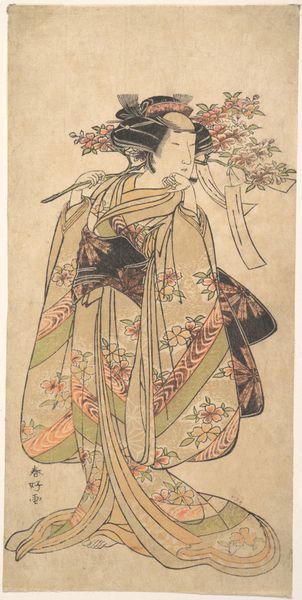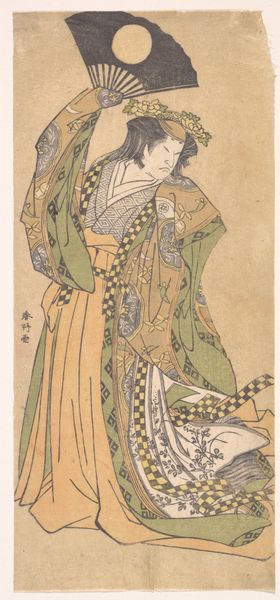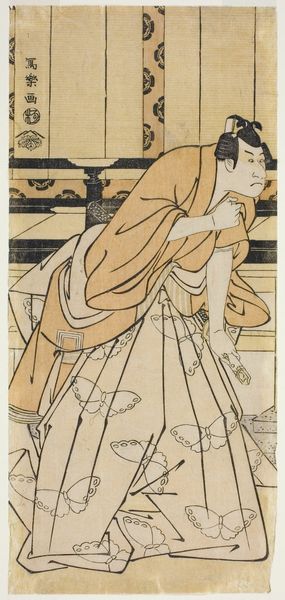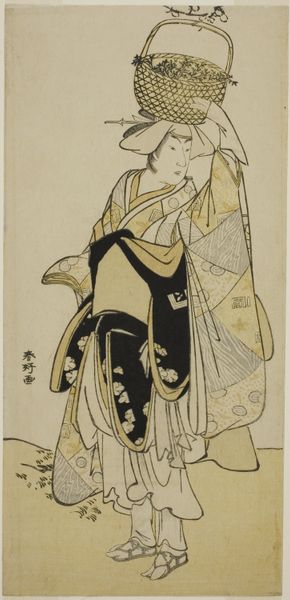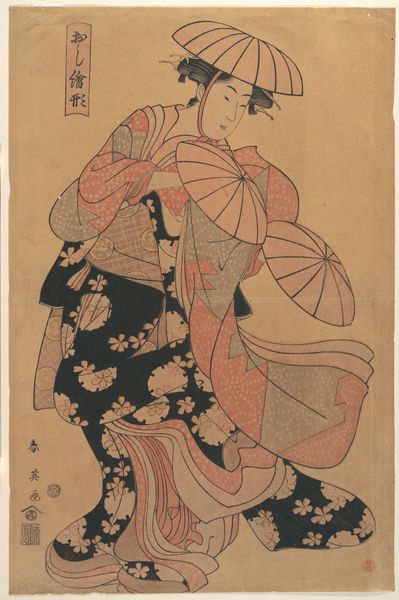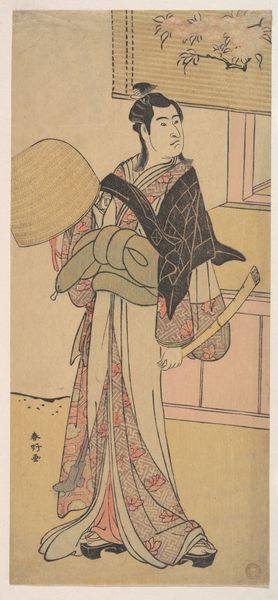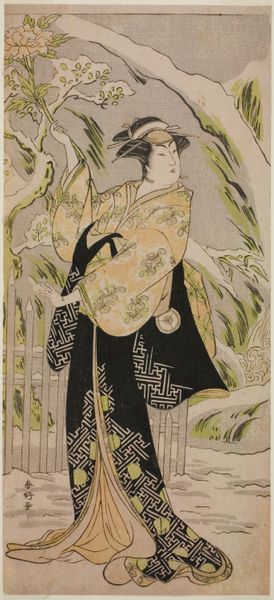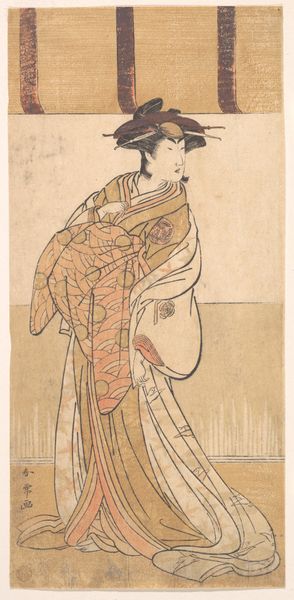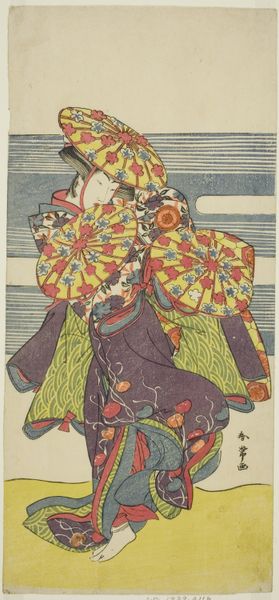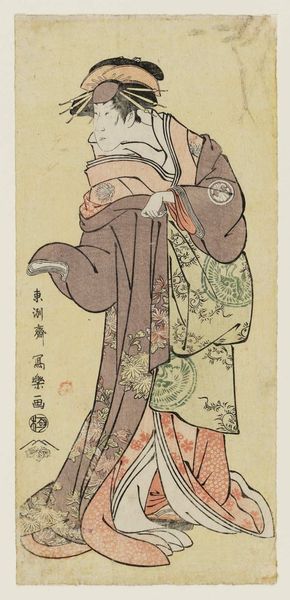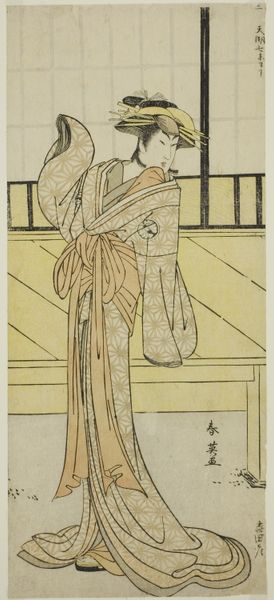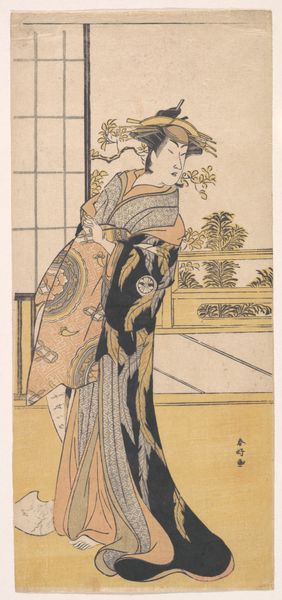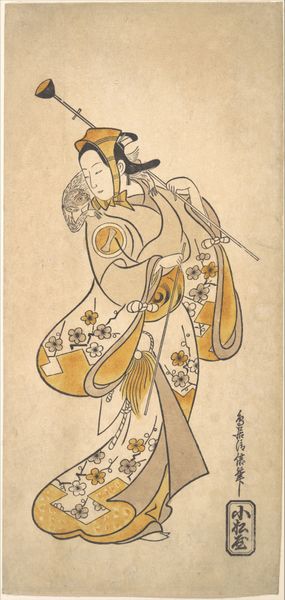
The Actor Iwai Hanshiro IV in the Hanagasa Dance in the Play Iromi-gusa Shiki no Somewake, Performed at the Nakamura Theater in the Ninth Month, 1781 c. 1781
0:00
0:00
print, textile, ink
#
portrait
#
ink painting
# print
#
asian-art
#
textile
#
ukiyo-e
#
japan
#
ink
Dimensions: 32.2 × 14.8 cm (12 11/16 × 5 13/16 in.)
Copyright: Public Domain
Editor: This captivating print by Katsukawa Shunsho, titled "The Actor Iwai Hanshiro IV in the Hanagasa Dance...", from around 1781, immediately strikes me because of the materiality of the fabrics represented here. The textures seem so intentionally highlighted. What can you tell me about the role of materials and labor in a piece like this? Curator: Considering this ukiyo-e print, we can really think about the complex intersection of materials, process, and the social context of its production. It's easy to admire the artistry, but what about the woodblock carvers, the papermakers, the pigment mixers? Each played a vital, and often anonymous, role. How do you think their contributions shape our understanding of the work itself? Editor: It's humbling to think about the unseen labor behind this single print. Did the availability of certain materials impact the style of ukiyo-e, maybe even influencing what was considered beautiful at the time? Curator: Absolutely. The characteristics of the wood, the types of available pigments, and even the fibers in the paper influenced the final image. Think about the limited color palette in many ukiyo-e prints; was that a stylistic choice or dictated by the expense and availability of certain colors? Also, the demand for these prints speaks to the economic forces driving artistic production and consumption. What kind of audience do you imagine engaging with these images? Editor: That makes me wonder about the intended lifespan of the artwork too. Were they created for a longer life cycle than they often experience? Curator: That's a great question! We should think of it in terms of value but also in terms of material. The relative affordability suggests mass consumption and possible ephemerality. That it has lasted until now changes our evaluation again. We get to examine the artist's skill, and all those invisible contributions of the workforce in 18th-century Japan. Editor: I never considered the supply chains and workforce behind these pieces so directly. Thank you for broadening my perspective! Curator: My pleasure! Seeing art through the lens of its production opens up so much to consider and appreciate.
Comments
No comments
Be the first to comment and join the conversation on the ultimate creative platform.
